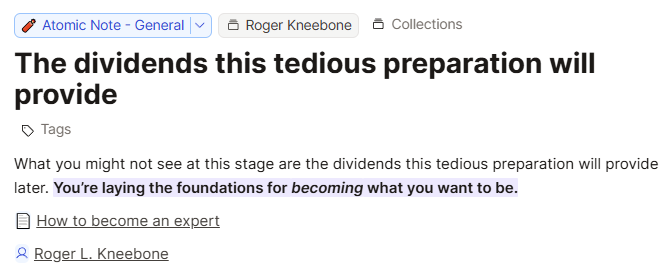LLTT Newsletter - September 2025

LLTT Newsletter - September 2025
The Prepared Dictation Advantage: Your Escape Route from the Plateau
As promised last month, here is a solution to the unprepared dictation trap
Last month, we uncovered an important truth: most students are likely spending too much of their practice time on activities that test rather than teach. When unprepared dictation dominates your practice routine, you're demonstrating what you already know instead of building what you need to know next.
The breakthrough? Prepared dictation. But not the way most students think about it.

What Prepared Dictation Isn’t (and Is)
Prepared dictation isn't about memorising passages. Rather, it is about intentional skill development. Think of it like a musician studying a score before performance. You're building the vocabulary, word patterns, and automatic responses that will serve you well in future unprepared situations.
As E. Harry Butler once noted: "Dictation practice is not about getting the hand to write faster, but to train the brain to react with greater speed. The hand will only move quickly when the brain triggers it."
The Learning vs. Performance Distinction
Educational research distinguishes between:
Learning activities (which build new abilities)
Performance activities (which demonstrate existing abilities)
Unprepared dictation is primarily performance-based: it reveals what you can currently do but doesn't expand those abilities. During unprepared dictation, your brain works on multiple fronts: decoding unfamiliar words, creating outlines, keeping pace, tracking meaning, and handling the pressure.
This mental overload makes learning nearly impossible.
Prepared dictation reduces this cognitive load by addressing vocabulary and outline challenges in advance, allowing you to focus on fluency and speed development.
The Bottleneck Principle
Your overall dictation speed is always going to be limited by the outline or grouping you write most slowly. A key insight: You would be faster overall if you weren't as slow on some things.
By identifying and eliminating these bottlenecks through targeted practice, you help create more fluid and consistent writing. This is particularly crucial in Teeline, where certain outlines or word groupings can dramatically increase efficiency.
The Professional Approach: Systematic Preparation
Strategic Assessment (5-10 minutes)
Before touching pen to paper:
Content Preview: What's the subject matter? This helps anticipate vocabulary.
Complexity Mapping: Identify sentences that begin simply but may contain challenging phrases.
Speed Considerations: What's the target speed? But remember, you can learn from faster passages even if you can't write it all at full speed yet.
Theory Integration: Does this passage emphasise specific theory principles you need to strengthen?
Targeted Vocabulary Development (10-15 minutes)
This is where the real learning happens:
Circle unfamiliar outlines: Don't guess. Look them up or work them out properly.
Practise challenging outlines: Write out three to five repetitions until they start to flow smoothly. The goal isn’t perfection; it’s awareness.
Identify word groupings: Identify common phrases that can be written in as few strokes as possible.
Focused Practice (10-20 minutes)
Critical principle: Spend the most time on what challenges you. This is hard for most people. While there is immense satisfaction in working on what you know well (it indirectly gives you a sense of accomplishment), ultimately, when it comes to advancing your skills, practising what you've already mastered yields diminishing returns.
Drill difficult sections: Practise problematic sentences in isolation.
Mental rehearsal: Visualise yourself writing challenging passages successfully. Two to three minutes a day will work wonders.
Contextual integration: After mastering difficult sections, practise them with surrounding sentences.
Build your outline library: Each prepared dictation should expand your vocabulary.
The Efficiency Principle
Your time and mental energy are finite. One of the harder lessons to learn is you must resist the urge to repeatedly practise what you've already mastered at the expense of what you have not. Instead of working through entire dictations linearly, practise selectively:
Identify your specific knowledge gaps
Target only those areas
Drill until automatic
Test in context
Move to new challenges
Reading: The Overlooked Skill
After writing any prepared dictation, always read it back. Practise reading both your own notes and printed Teeline. Train yourself to read groups of words rather than individual outlines.
Breaking Free from the Flexibility Trap
Many students rush to create personal adaptations before mastering standard outlines. This creates inconsistency that actually slows progress. Here is a suggested approach that has worked well for others:
Learn standard outlines and groupings thoroughly
Seek to understand the principles behind them
Practise until they're automatic
Then, and only then, intelligently adapt based on your personal writing style
The Three-Phase Development Model
Foundation Building
In the beginning, spend most of your time (about 80%) on prepared dictation. This is where you build your vocabulary, recognise patterns, and develop proper technique. The remaining 20% of unprepared work lets you test what you're learning. Here's the beautiful part: speed isn't something you force; it emerges naturally as your competence grows.
Integration
As your foundations solidify, shift toward balance (equal time on prepared and unprepared dictation). Now you're applying those learned patterns in real-time, building confidence with increasingly challenging material. This is where preparation and performance begin to come together.
Professional Application
Eventually, you'll flip the ratio (80% unprepared, 20% prepared). At this stage, unprepared dictation becomes your primary practice because you've built the skills to handle it. Your prepared work becomes targeted—learning specialised vocabulary for specific professional contexts, maintaining sharp technique, addressing particular challenges as they arise.
The Professional Mindset
Remember the wisdom of Frank Harrison: "You cannot dilly-dally with shorthand and make a success of it. The mastery of any calling means work, energy, enthusiasm...from start to finish."
As we have stated many times before: Amateurs practise until they occasionally succeed; professionals practise until failure becomes practically impossible.
Breaking Your Personal Plateau
If last month's description resonated with you: steady practice without steady progress, recurring mistakes that won't go away and mounting frustration, then give prepared dictation a try. View prepared dictation as an investment in your quest for more reliable long-term progress.
Students who embrace proper preparation may initially feel they're progressing more slowly, but they ultimately achieve higher speeds, greater accuracy, and more confidence than those who attempt shortcuts.
The Long Game
Think of prepared dictation not as a detour from your destination, but as building the roads that will carry you there reliably and efficiently.
The difference between a shorthand writer who can occasionally manage unprepared dictation well and one who can always deliver reliable results lies not in natural talent, but in the wisdom to prepare properly.
Remember the 5 P's: Prior preparation prevents poor performance — alliteration at its finest.
Your future self will thank you for the patience to prepare properly today.
Interesting Websites

Why your attention keeps slipping away (and how to get it back) - Big Think
Modern life scatters our attention across endless “urgent” demands, often leaving us busy but unproductive.
Be sure to visit us at the LLTT Website, YouTube, Facebook, Instagram, Quizlet and Soundcloud.
If you’re looking for Teeline reading practice, Skill Building Through Reading 📗 - is available for purchase online.
Much work (and ❤️!) has gone into this 48 page, 6x9 softcover book:
Five 5️⃣ carefully selected passages: Improve your sight 👁️ recognition of outlines and word groupings.
Dual Format: Each passage includes both printed Teeline and the longhand ✍️ transcription.
Proven Learning Approach: Reading printed 🖨️ shorthand is a method long-favoured by skilled practitioners.
Whether you're a student, journalist, or professional seeking to improve your note-taking, this book will be a valuable addition to your Teeline learning resources.
To order, please visit the book’s landing page or respond to this email with any questions.
If you find this newsletter helpful, please help us spread the word and forward to a friend!
A Parting Thought


Add a comment: